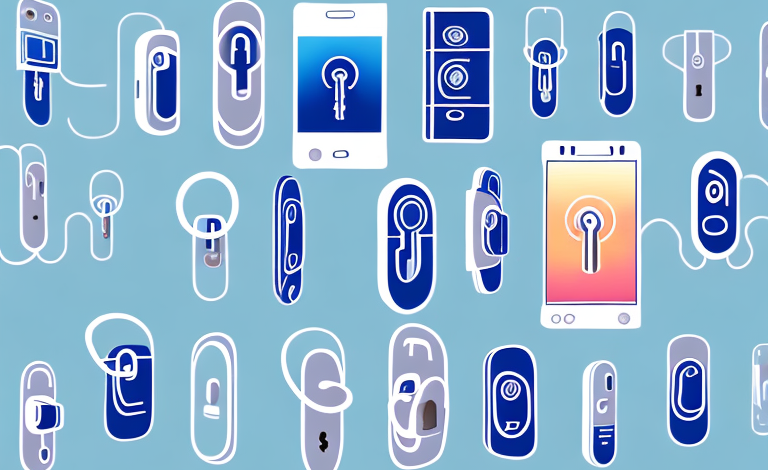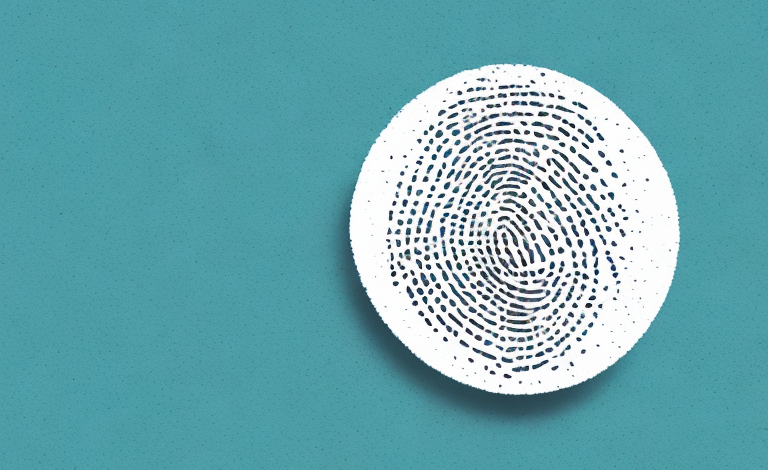In today’s digital age, our phones are like mini-computers that contain a wealth of personal and sensitive data. From financial information to personal photos and social media accounts, our phones hold a treasure trove of valuable information that needs protection. That’s why it’s crucial to have a strong phone lock to keep our data safe from unauthorized access.
The importance of phone locks in protecting your data
Having a good phone lock is essential to protect your sensitive information from prying eyes. Phone locks act as a first line of defense against hackers, thieves, and other bad actors who might try to access your data. Suppose you lose your phone or it gets stolen. In that case, a strong phone lock can prevent unauthorized access, making it difficult for someone to access or misuse your sensitive information.
There are several types of phone locks available, including PINs, passwords, patterns, and biometric locks such as fingerprint or facial recognition. It is important to choose a lock that is not easily guessable or replicated, and to change it regularly to ensure maximum security. Additionally, some phones offer the option to encrypt data stored on the device, adding an extra layer of protection to your sensitive information.
While phone locks are an important security measure, it is also crucial to be mindful of other potential vulnerabilities. For example, be cautious when downloading apps or clicking on links, as these can sometimes contain malware or phishing scams that can compromise your data. Regularly updating your phone’s software and avoiding public Wi-Fi networks can also help to reduce the risk of unauthorized access to your information.
Understanding the different types of phone locks
There are several types of phone locks available, and understanding the differences between them is critical to choose the right one. Some of the most common phone lock types include PIN, pattern, password, and biometric ones. Each type of lock has its strengths and weaknesses, and choosing the right one depends on your specific needs and preferences.
PIN vs. Pattern vs. Password: Which is the most secure?
When it comes to phone locks, PIN, pattern, and password locks are the most commonly used ones. But which one is the most secure? Let’s look at each one in detail.
PIN Locks
PIN locks are the simplest type of lock that requires you to enter a four or six-digit code to unlock your phone. While PIN locks are easy to set up and use, they are not the most secure option, as the limited number of digits makes them vulnerable to brute-force attacks.
Pattern Locks
Pattern locks require the user to draw a unique pattern on a grid of dots to unlock their phone. While patterns can be more complex than PIN codes, they are prone to smudge attacks, where someone can decipher your pattern by seeing the smudge marks on your screen.
Password Locks
Password locks are the most advanced and secure type of phone locks. They require users to enter a combination of letters, numbers, and symbols to unlock their phone. The more complex the password, the harder it is to crack, making password locks the most secure option.
However, it’s important to note that even password locks can be vulnerable to hacking if the user chooses a weak password or uses the same password for multiple accounts. It’s recommended to use a unique and complex password for your phone lock and to change it regularly to ensure maximum security.
The pros and cons of using biometric locks (face recognition, fingerprint)
Biometric locks use unique physical characteristics such as your face or fingerprint to unlock your phone. While biometric locks are convenient and can be more secure than traditional locks, they are not foolproof. Hackers can still replicate your biometric data, and in some cases, a simple photograph can be used to bypass facial recognition.
Another potential drawback of biometric locks is that they may not work for everyone. For example, individuals with certain medical conditions or disabilities may not be able to use fingerprint recognition. Additionally, biometric locks can be more expensive than traditional locks, which may not be feasible for some consumers. It’s important to weigh the pros and cons and consider your individual needs before deciding whether to use a biometric lock.
How to set up a strong phone lock for maximum security
Regardless of the lock type you choose, there are several things you can do to make your phone lock stronger and more secure. Remember, the goal is to make it as challenging as possible for hackers to bypass your lock.
Here are some tips for setting up a strong phone lock:
- Use a long, complex password
- Change your password regularly
- Don’t share your password with anyone
- Avoid using predictable patterns or numbers
- Disable biometric unlocks if you’re in a high-risk situation
Another important thing to keep in mind is to avoid using the same password for multiple accounts. If a hacker gains access to one of your accounts, they could potentially use that password to access your phone as well. It’s also a good idea to enable two-factor authentication for added security. This means that in addition to your password, you’ll need to provide a second form of verification, such as a fingerprint or a code sent to your email or phone, to access your phone.
Tips for creating a secure phone lock that’s easy to remember
While a long, complex password can be more secure, it can also be challenging to remember. Here are some tips for creating a safe yet easy-to-remember lock:
- Use a passphrase instead of a password
- Use a combination of letters, numbers, and symbols
- Use familiar words or phrases
- Mix capital and lowercase letters
- Avoid using personal information such as your name or birthdate
It’s also important to change your phone lock regularly to ensure maximum security. Consider changing it every few months or whenever you feel that your lock may have been compromised. Additionally, avoid using the same lock for multiple devices or accounts, as this can make it easier for hackers to gain access to your personal information.
Common mistakes people make when setting up their phone locks
Mistakes are common when it comes to setting up phone locks, and they can compromise your security. Here are some of the most common mistakes people make when setting up phone locks:
- Using weak or predictable passwords
- Sharing passwords with friends, family, or coworkers
- Not changing passwords regularly
- Adding biometric information that could be easily replicated
To avoid making these mistakes, follow the tips mentioned earlier, and always use common sense when setting up your phone lock.
Another common mistake people make when setting up their phone locks is using the same password for multiple accounts. This can be dangerous because if one account is compromised, all of your accounts are at risk. It’s important to use unique passwords for each account to ensure maximum security.
Additionally, some people may forget to enable two-factor authentication, which adds an extra layer of security to your phone lock. Two-factor authentication requires a second form of verification, such as a code sent to your phone or an authentication app, before allowing access to your device. It’s important to enable this feature to prevent unauthorized access to your phone.
How to test the strength of your phone lock and detect vulnerabilities
It’s always a good idea to test the strength of your phone lock, as hackers are constantly finding new ways to bypass them. Here are some ways to test your phone lock:
- Attempt to guess your password or pattern multiple times
- Try unlocking your phone in different lighting conditions
- See if anyone can guess your password or pattern by watching you unlock your phone
- Use a security app to detect and fix vulnerabilities
Another way to test the strength of your phone lock is to try unlocking it with different fingers or hands. This can help you determine if your phone lock is easily bypassed by someone who has access to your fingerprints or handprints.
It’s also important to keep your phone’s operating system and security software up to date. This can help prevent vulnerabilities that hackers can exploit to bypass your phone lock. Make sure to regularly check for updates and install them as soon as they become available.
What to do if someone tries to bypass your phone lock
If you suspect someone is trying to bypass your phone lock or steal your data, take immediate action. Here are some steps to follow:
- Change your password immediately
- Notify your phone manufacturer or service provider
- Contact the police if necessary
- Back up your data to prevent data loss
It’s important to be aware of the signs that someone may be trying to bypass your phone lock. These can include repeated failed attempts to unlock your phone, unfamiliar apps or files on your device, and unusual activity on your accounts. If you notice any of these signs, it’s important to take action immediately to protect your data and privacy.
How to recover data if you forget your phone lock
If you forget your phone lock, don’t panic. Here are some steps you can take to regain access to your data:
- Use your Google or Apple ID to reset your password
- Use a backup PIN code if you set one up
- Contact your phone manufacturer for assistance
- Restore your phone to its factory settings
It’s important to note that restoring your phone to its factory settings will erase all data on your device. This means that if you haven’t backed up your data, you will lose everything. Before taking this step, make sure you have exhausted all other options and have backed up your data to a cloud service or external device.
Future trends in mobile security: Are there better alternatives to traditional locks?
As technology advances, new forms of mobile security are emerging. While traditional locks are still the most popular, we’re seeing the rise of other security options such as facial recognition and iris scanning. Some experts suggest that biometric information combined with traditional locks could provide the best form of mobile security in the future. As we move forward, we can expect to see more innovative and advanced forms of mobile security.
Conclusion:
Choosing the most secure phone lock depends on your needs and preferences. But remember that no lock is foolproof, and it’s always important to follow best practices to maximize your security. By using a strong lock, changing your password regularly, and being mindful of potential vulnerabilities, you can stay one step ahead of hackers and protect your sensitive data.
One of the emerging trends in mobile security is the use of blockchain technology. Blockchain is a decentralized, secure ledger that can be used to store and verify data. Some companies are exploring the use of blockchain to secure mobile devices and protect against hacking attempts. By using blockchain, mobile devices can be made more secure and less vulnerable to attacks. This is an exciting development in the field of mobile security, and we can expect to see more companies adopting blockchain technology in the future.



